You probably already know that things like potatoes, carrots, and beets are edible – but the list doesn’t end there.
This list of 30 common root vegetables that are edible will have you rethinking everything you know about what’s going on underground.
After all, it’s not just the leaves and fruits of plants that are edible (and delicious). Roots are packed with nutrients and even those that aren’t so easy to find offer a variety of nutritional benefits.
So without further ado, here are some roots that are edible – consider growing some or adding them to your list of items to search for as you forage!
Add these 30 edible roots to your list of plants to grow or forage – you’ll be glad you did!
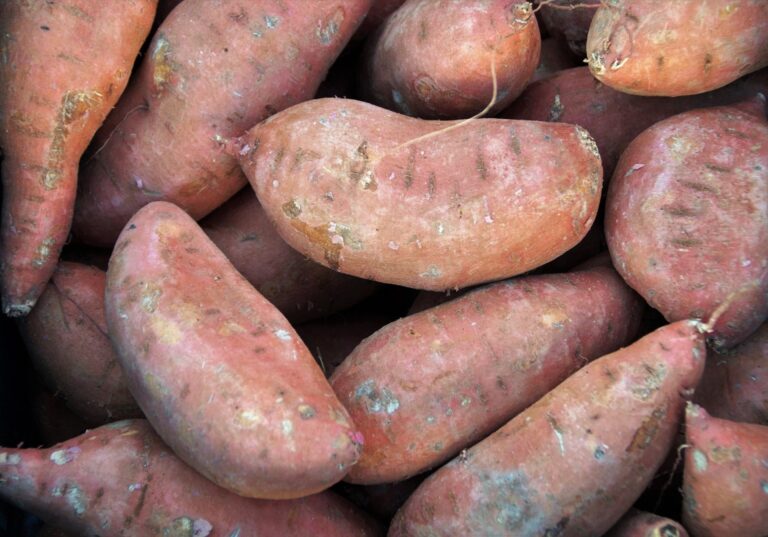
Table of Contents
1. Sweet Potatoes (Ipomoea batatas)
Despite being called “potatoes,” nutritionally, sweet potatoes are vastly superior to regular white and red potatoes (though we’re not knocking them, either – more on this below).
Sweet potatoes are rich in vitamin C, vitamin A, fiber, manganese, and plenty of beneficial antioxidants (like beta-carotene). Some studies indicate that sweet potatoes may help control blood sugar and protect against vision loss.
You can broil, bake, roast, or sauté sweet potatoes (anyone up for some sweet potato pie)?
Growing sweet potatoes at home is possible, too – you’ll need a relatively long growing season, but there are plenty of sweet potato varieties to choose from that are designed specifically for northern growers.
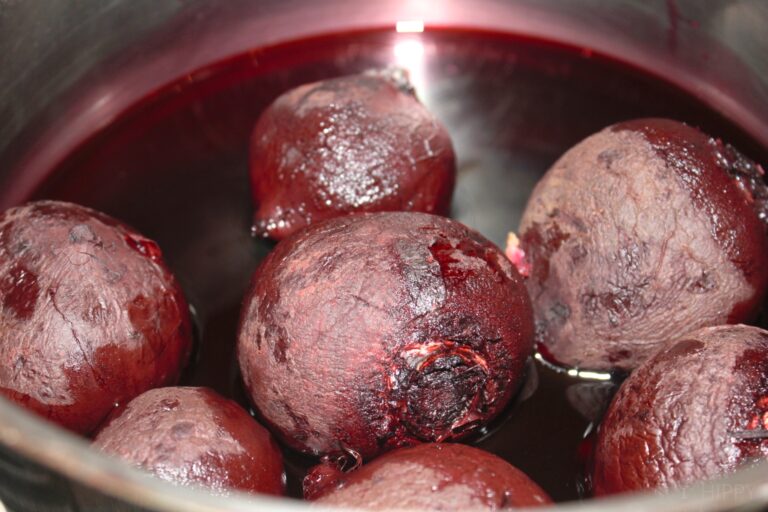
2. Beets (Beta Vulgaris subspecies, Vulgaris Conditiva group)
Another garden staple that’s also an edible root? Beets!
Although beets can also be grown and consumed for their leafy tops, most people prefer to eat the roots. Beets are some of the most nutritious vegetables out there, loaded with nitrates, fiber, folate, and even manganese.
Beets can be roasted, steamed, pickled, or even boiled. They grow quickly, too, meaning it’s possible to have multiple harvests of these tasty veggies during a single growing season.
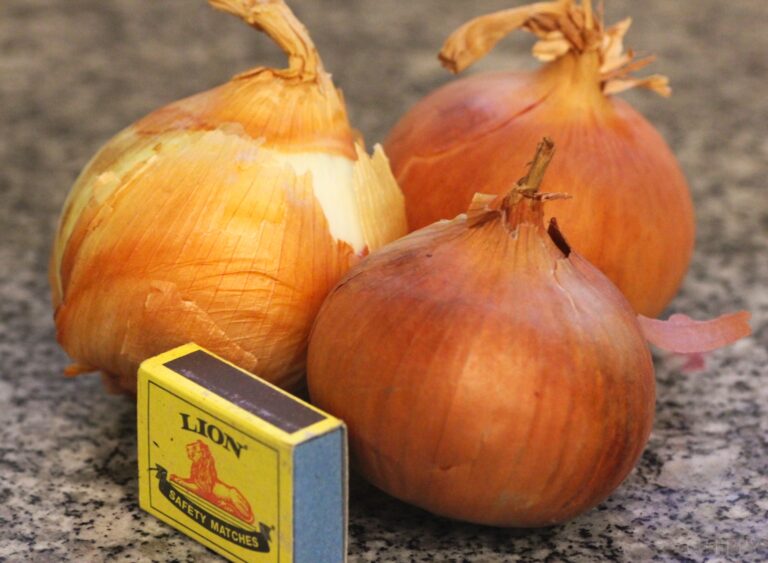
3. Onions (Allium Cepa)
Ah, onions – another one of the classic root vegetables. Onions serve as staples in many different types of cuisines – and for good reason.
Onions are loaded with vitamin C, antioxidants, and fibers. They can help protect your cells from oxidative damage and prevent disease.
You can grow your own onions easily. There are certain types of onions (including both long-day and short-day varieties) that hold up well in long-term storage, especially if you have a root cellar. Some last up to 8-10 months when stored properly!
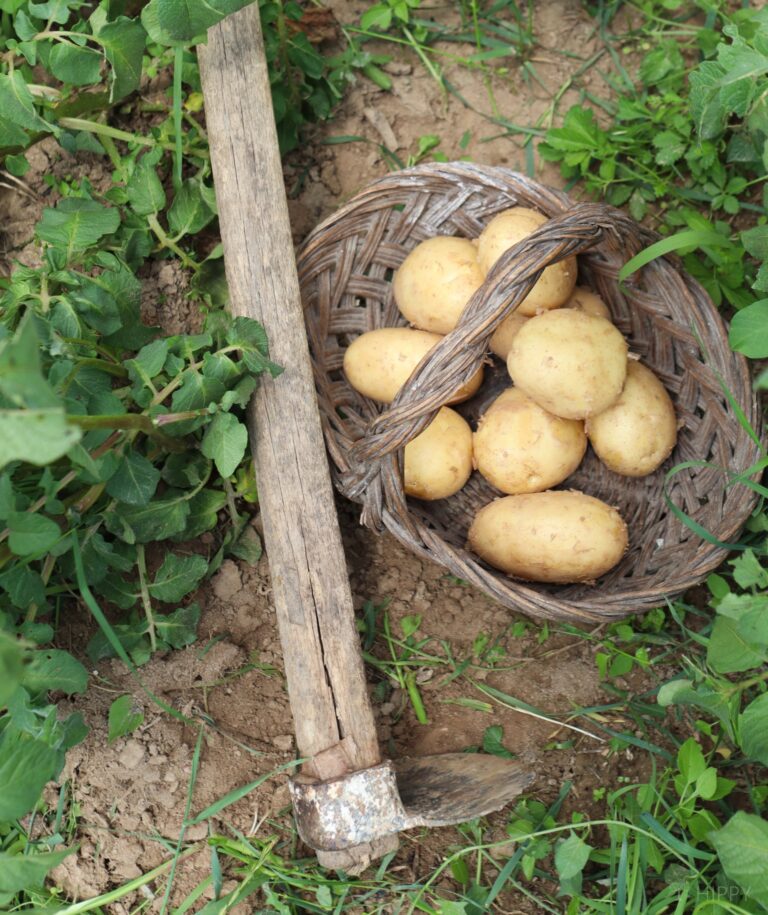
4. Potatoes (Solanum Tuberosum)
We would be remiss if we didn’t mention potatoes on our list – everybody’s favorite root vegetable!
Potatoes have been cultivated for centuries, with more than 2000 different varieties grown all over the world. Why are they so popular? You probably already know the answer – because they’re so delicious and versatile!
Potatoes can be baked, roasted, mashed, or fried. They’re filling and high in healthy starches.
Of course, you probably already know how easy potatoes are to grow, too. You can grow potatoes just about anywhere in the world, even if you live in the middle of a city.
Lots of urban gardeners are experimenting with the process of growing potatoes in trash cans – it’s something that’s easy to do and will allow you to produce your own edible roots right at home.
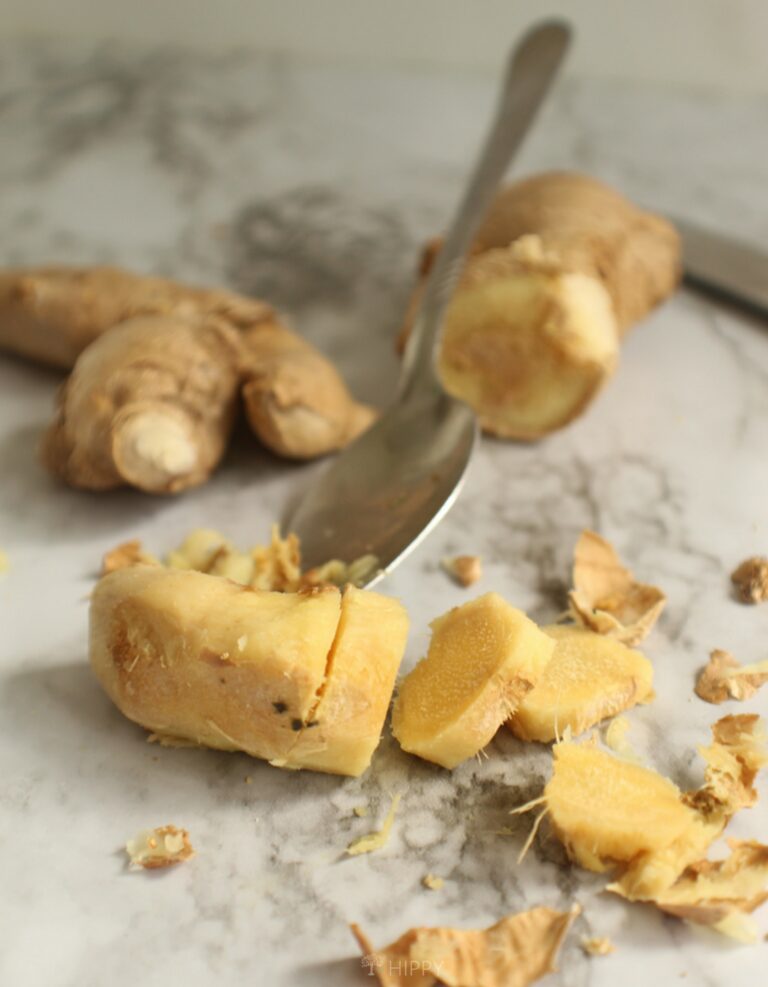
5. Ginger (Zingiber Officinale)
This isn’t one of the more common edible roots – it can be tough to grow your own ginger at home.
That said, this flowering plant, which is closely related to turmeric, is a nutritional powerhouse. It’s native to China, and makes a wonderful addition to things like soups, teas, stews, and smoothies.
Zesty and full of flavor, it has medicinal benefits such as the ability to lower pain, inflammation, and reduce nausea.
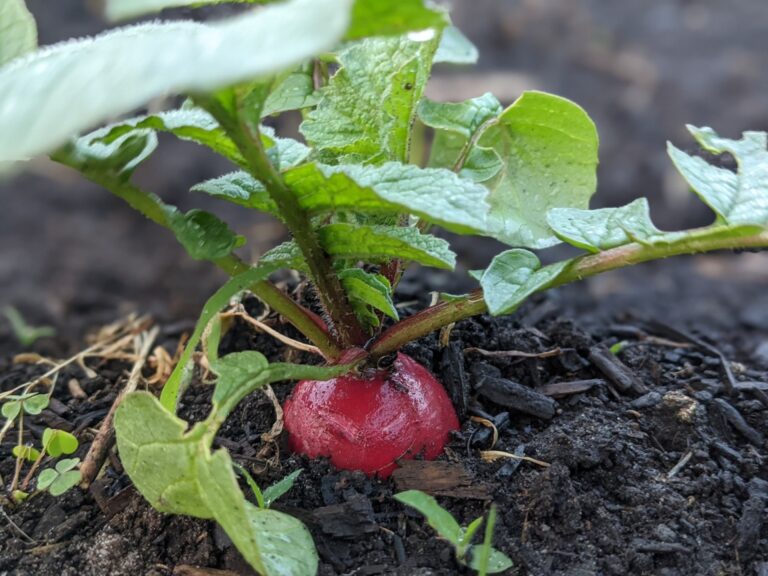
6. Radishes (Raphanus Sativus)
Radishes are small, but boy, are they mighty! These little roots pack a punch.
There are plenty of different radish varieties you can choose from, too. From the long and mighty Daikon radish to the cute and sweet watermelon radish, you’re sure to find one that matches the needs of whatever you’re cooking.
Radishes are known to have antifungal properties, and are also low in carbohydrates. Most importantly, they can add a much-needed crunch to your snacks and meals. They’re perfect in salads, sandwiches, slaws, and more.
Like beets, radishes grow quickly – even more so, in fact, with some varieties maturing in as little as three weeks. Because of this, you can keep a batch of radishes growing all year long (even if you’re growing in a container garden!).
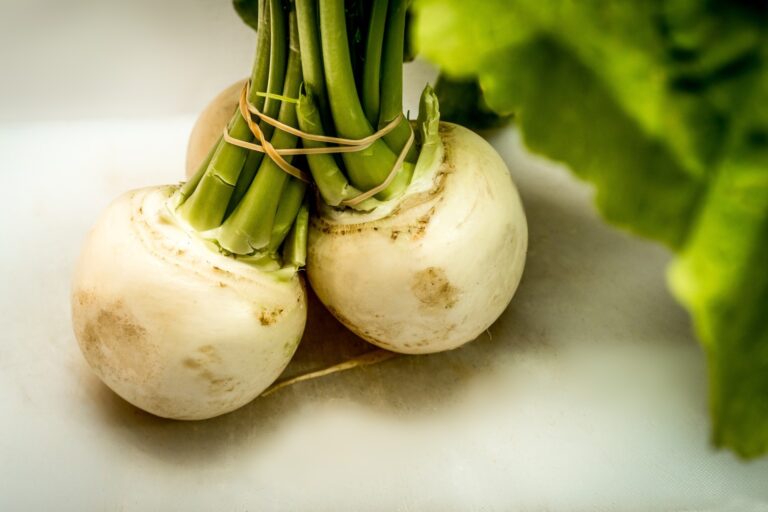
7. Turnips (Brassica rapa, subspecies rapa)
You may have hated eating mashed turnips growing up as a child, but as an adult, there’s a good chance that you recognize the myriad benefits that these edible roots present.
Turnips have been cultivated for centuries, and for good reason. They store well, up to a month or so in the root cellar, and like most cruciferous vegetables they have an impressive nutrient profile.
Use turnips in any recipe that calls for potatoes. You can make turnip mashed, turnip fries, or even turnip salads.
Again, this is a vegetable that’s easy to grow at home – just make sure you take the time to amend the soil beforehand so it’s light and airy. These roots don’t like to be crowded!
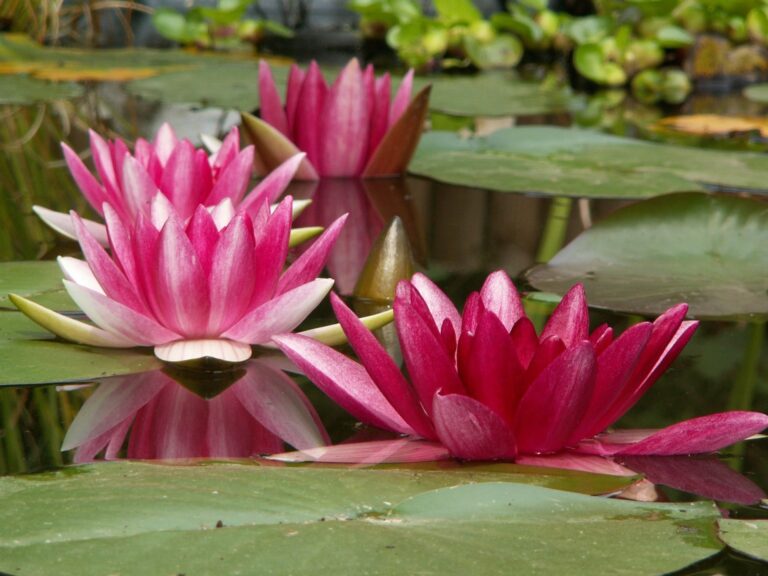
8. Water Lily (Nymphaeaceae)
As long as you boil the tubers and rhizomes, water lily roots are also safe to eat. If you don’t, you run the risk of poisoning from alkaloids known as nuphorin.
These plants aren’t necessarily delicious – in fact, the roots are typically only eaten as famine foods or for their medicinal benefits. You can grind the roots into a bread-like dish or eat them roasted.
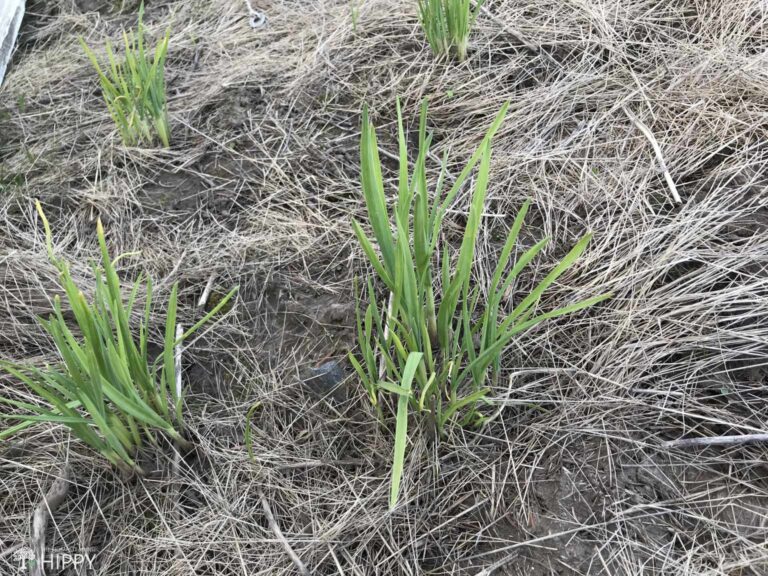
9. Garlic (Allium Sativum)
Here’s a root vegetable that you may not have considered yet – garlic!
Garlic belongs to the Allium genus and is closely related to onions as well as to leeks, shallots, and chives, a few other root vegetables we’ll mention later on. It’s well-regarded for its medicinal properties and its value in cooking.
Garlic is used in what seems like the vast majority of dishes – and it can also promote heart health and immune function. If you have a cold, there’s nothing like a chicken soup filled with garlic to help fight it off!
It also helps fight against vampires, too, we hear!
10. Chinese Water Chestnut (Eleocharis Dulcis)
Also known just as chestnut, this plant is native to Asia, Africa, and Oceania. It is often grown for its edible roots.
It’s not actually a nut but instead an aquatic vegetable with tall, tubular leaves. The roots are crisp and white. They can be eaten raw, grilled, boiled, or pickled. They serve as a core ingredient in many types of Chinese cuisine.
11. Arrowhead (Sagittaria latifolia)
Arrowhead is often referred to as swamp potato – and for good reason! This plant produces delicious edible roots that are easy to forage for.
You can count on these roots for a reliable source of carbohydrates, even during the winter. Although some are edible raw, they taste much less bitter when cooked. You can also propagate your own easily by replanting the roots.

12. Cattail or Bulrush (Typha)
Cattails or bulrushes are also edible. A classic homesteading trick is to grind the roots into a powder, which can then be baked into the bread.
Cattails are easy to find in any wetland habitat, making this a wonderful edible root to add to your list of foods to forage.
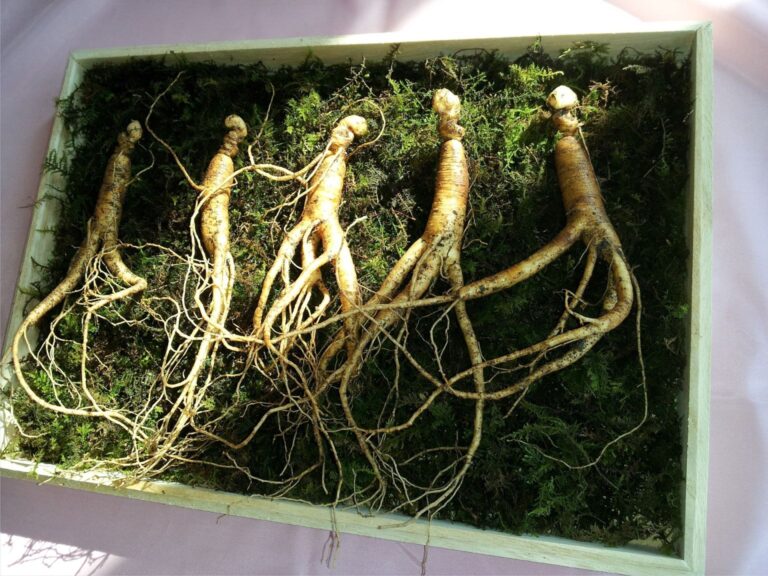
13. Ginseng (Panax ginseng)
Ginseng is often found growing in the wild. A perennial plant, it is native to East Asia but is now cultivated just about all over the world.
A slow-growing perennial, ginseng can be hard to find because the roots aren’t usually harvested until the plants are at least five years old. It is often used as an herb in folk medicine, helping to treat a variety of conditions.
Of course, it tastes wonderful in tea, too.
14. Desert Yam
Also known as rock morning glory, this plant is native to Australia, but is cultivated in other parts of the world, too.
It grows beautiful blue to purple flowers, with tubers serving as a valuable source of food. It is sometimes referred to as the bush potato for this reason.
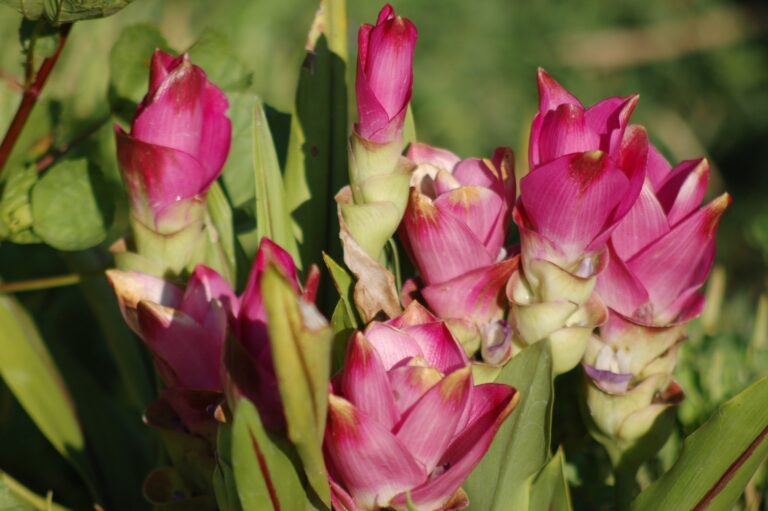
15. Turmeric (Curcuma Longa)
Turmeric is a root vegetable that belongs to the same family as cardamom and, as you now know, ginger.
The roots of this plant are usually consumed after being ground into a fine powder. This adds a dash of color (as well as potent nutrients) to recipes.
To get the most out of the turmeric you eat, consider pairing it with black pepper. Black pepper has a compound that boosts the absorption of curcumin (the active compound in turmeric) in your digestive tract.
16. Cassava (Manihot esculenta)
Cassava, also known as yuca or manioc, is a woody shrub in the spurge family. It is often grown as an annual crop and is a major food staple in many countries.
It can be cooked in a variety of ways and is similar in taste and texture to potatoes. It can also be ground into flour to make cakes, cookies, and breads.
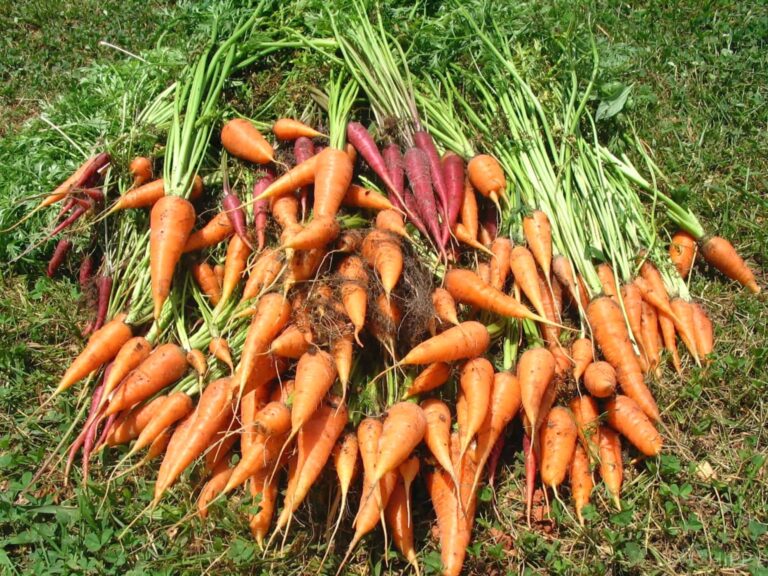
17. Carrots (Daucus Carota, Sativus subspecies)
Carrots are some of the most well-known root vegetables. They’re also some of the most nutritious edible roots, too.
Carrots are loaded with vitamin K and A, plus the infamous beta-carotene. It is the beta-carotene content that carrots are, perhaps, the most famous for.
If you remember your mother chiding you to eat your carrots to improve your vision as a child, it is the beta carotene you can blame.
These edible roots taste great raw, cooked, or even baked (carrot cake, anyone?).
18. Taro (Colocasia Esculenta)
Taro is a tropical plant that is usually grown for its corms, or roots. Taro is used as a food staple in many African countries, as it is similar in flavor to yams.
In fact, despite the fact that taro is not quite as common in the Western world, it is one of the earliest cultivated plants in the world.
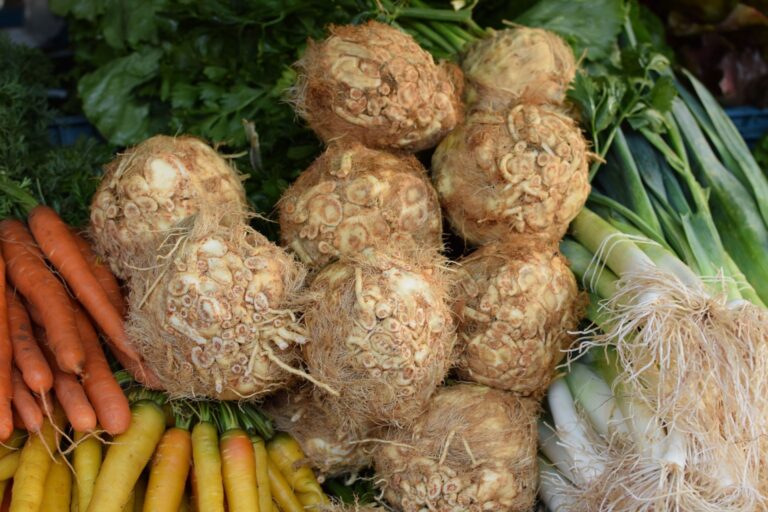
19. Celeriac (Apium graveolens, variety rapaceum)
Not to be confused with celery, celeriac looks almost identical to the other vegetable up top – but it is the root that you have to pay attention to.
Also known as celery root, celeriac is versatile and tasty. It’s easy to cook and enjoy, with a crunchy texture that works well raw in salads or cooked in place of potatoes. Just one serving comes with almost all the vitamin K you need for the day!
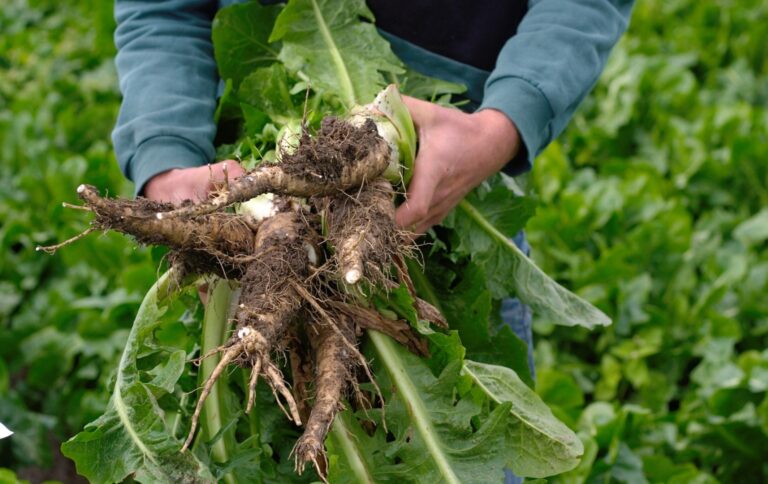
20. Chicory (Cichorium intybus)
Chicory is often harvested for its leafy tops – but you can also eat the root. In fact, when times were tough, chicory was often harvested for its roots, which were used as a substitute for coffee.
The flavor is much more intense and bitter, but it has impressive nutritional benefits – it can detoxify, for one.
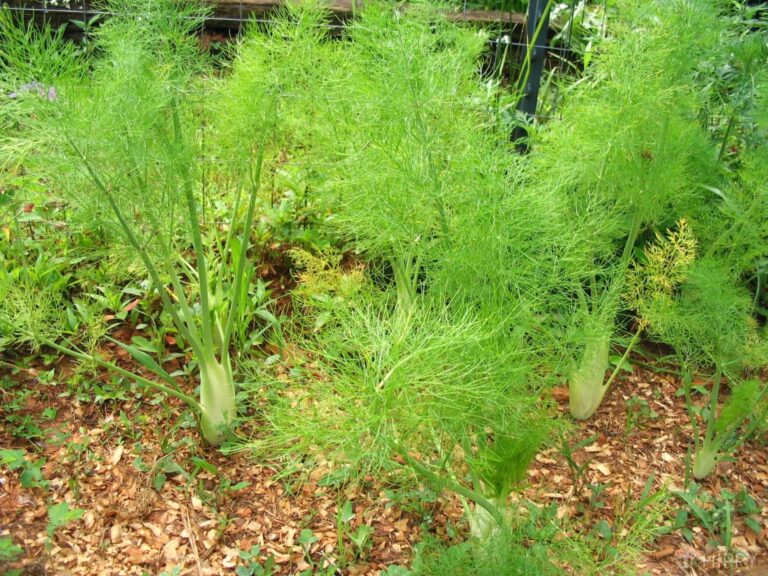
21. Fennel (Foeniculum vulgare)
Fennel has a strong licorice-like flavor. It can be enjoyed fresh or sauteed, but is most often used as a seasoning in various sauces, soups, salads, and pasta dishes.
It has lots of nutritional benefits, including offering diners plenty of vitamin C, fiber, vitamins, and potassium. Its distinct flavor is provided to it by the compound anethole – this compound alone offers plenty of health benefits.
Grow fennel in your herb garden – just don’t grow it too close to related plants like carrots or dill. It might attract pests.
22. Arracacha (Arracacia xanthorrhiza)
Arracacha is a bitter-tasting root that is native to the Andes. It can be hard to find in stores, but if you’re lucky enough to find it – or live in the right climate to grow your own at home – you’re in luck.
This vegetable looks much like a carrot, with purple or yellow flesh. However, once cooked, it smells and tastes more like a mixture of celery, cabbage, and chestnuts. It also has edible leaves that look much like parsley.
23. Evora
This rare root is common in Portugal, where the root is typically served as dessert.
24. Sea Holly (Eryngium)
Sea holly roots, also known as eryngium, are popular in European cuisine. They have an unpleasant odor but can be used in soups to give them a unique flavor.
25. Rutabaga (Brassica napus, Napobrassica group)
Not everybody is fond of rutabagas, but you can’t deny the fact that these edible roots are incredibly good for you.
You can also eat the leaves of rutabagas, though it is the roots for which these vegetables are most often commercially grown. They are loaded with vitamin C, manganese, potassium, and plenty of disease-fighting antioxidants. Rutabagas are also a wonderful source of fiber.
Like many of the other root vegetables on this list, rutabagas store remarkably well. You can toss them in a bin in the root cellar and expect them to last throughout the winter.
26. Goat’s Beard (Aruncus dioicus)
Also known as Spanish or purple salsify, this plant technically refers to a number of plants in the Tragopogon genus.
Whichever you choose, you’re sure to love the flavor of these roots. They can be sliced up into tiny rounds, dried like mushrooms, and then looked just like you might prepare mushrooms, too.
27. Earth Chestnut (Conopodium majus)
Also known as hawknut, this tuber produces growth that looks much like a nut – a chestnut, in fact. It resembles a chestnut in its size, color, and even flavor. Those who taste it claim that it is similar to a combination of sweet potatoes, hazelnuts, chestnuts, and Brazil nuts.
It’s a wild herb that you may be able to forage for in the wild, if you know where to find it and are lucky enough to live where it grows naturally.
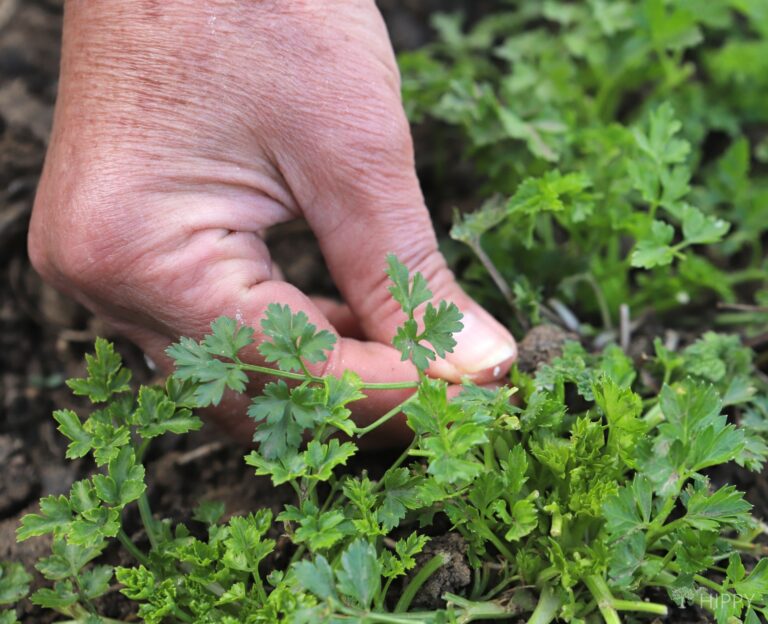
28. Parsley (Petroselinum crispum)
Here’s another vegetable that many people don’t realize has edible roots – parsley!
This herb is usually grown for its leafy tops, but the root can be eaten as well. It tastes similar to a parsnip or a stalk of celery. However, it is sweeter, more delicate, and a bit grassier.
Often used in Central and Eastern Europe, you can grow your own parsley at home and add the root to your favorite dishes.
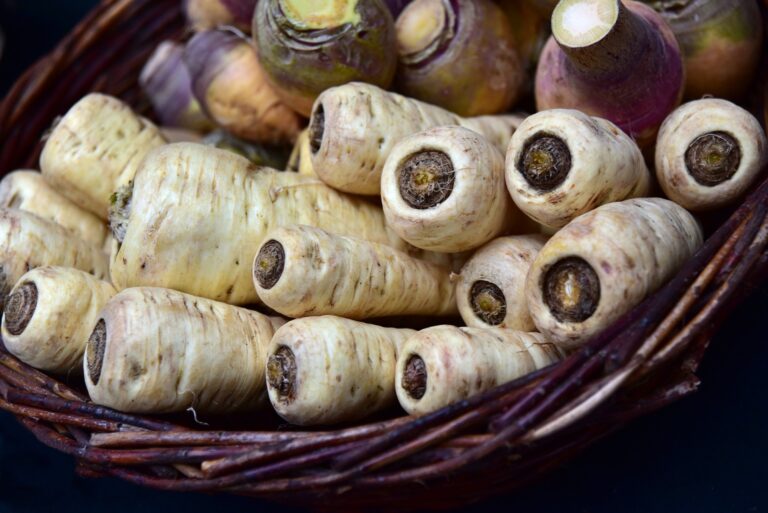
29. Parsnip (Pastinaca sativa)
Of course, you can always rely on parsnips if you’re looking for edible roots too. These root vegetables are closely related to carrots and parsley, since they all belong to the flower plant family Apiaceae.
This biennial plant is usually grown as an annual and is unique in that it becomes sweeter if it is hit by a winter frost.
Parsnips are usually eaten cooked but they can also be eaten raw. They taste similar to carrots and are just as high in fiber, vitamins, and minerals.
Be careful harvesting your parsnip plants, though. Your skin can develop a rash if exposed to sunlight after handling the foliage and stems.
30. Jicama (Pachyrhizus erosus)
Last but not least is jicama. This tropical climbing plant is cultivated for its large taproot – this root looks much like a parsnip but with a crunchier, juicier profile. It is sweet, with a flavor that is often compared to that of an apple.
As you can see, there’s much more to a plant than just what you can see growing above the ground!
Consider adding one or more of these tasty edible roots to your diet today. You’ll love the variety and flavors they provide!
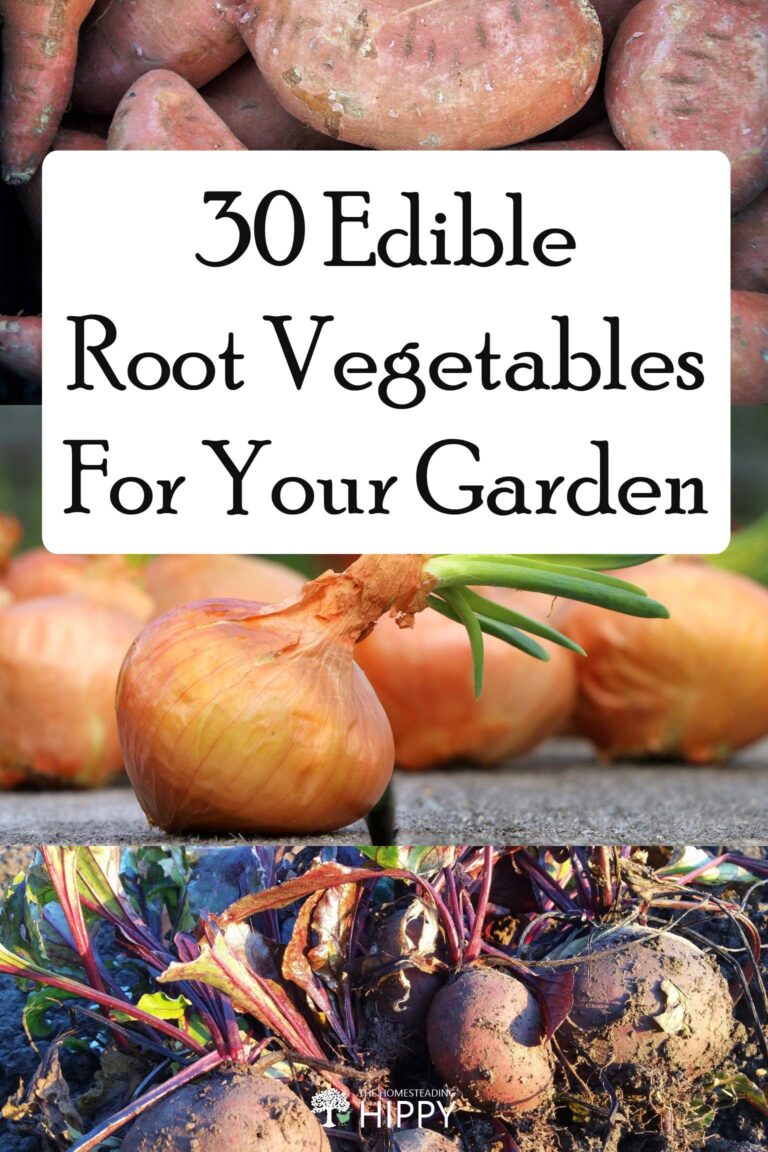

Rebekah is a full-time homesteader. On her 22 acres, she raises chickens, sheep, and bees, not to mention she grows a wide variety of veggies. She has a huge greenhouse and does lots of DIY projects with her husband in her ever-growing homesteading endeavor. Learn more about Rebekah here.
